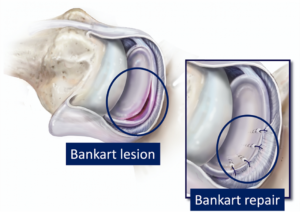Bankart Tear, a common shoulder injury often encountered in athletes and active individuals, has long been a concern for both patients and medical professionals. However, recent advances in medical science have brought about revolutionary changes in the treatment of this condition, offering hope and improved outcomes for those affected. In this blog post, we will explore the latest breakthroughs in Arthroscopic shoulder surgery and managing Bankart Tear, ranging from minimally invasive surgical techniques to regenerative medicine approaches.
- Arthroscopic Bankart Repair: A Game-Changer in Surgical Treatment
Traditionally, Bankart Tear was addressed through open surgery, which involved significant tissue damage and prolonged recovery periods. But with the advent of Shoulder Arthroscopic Bankart Repair Surgery, everything changed. This minimally invasive procedure involves the use of an arthroscope, a small camera, and specialized instruments inserted through tiny incisions to repair the torn labrum. The benefits of this technique include reduced pain, quicker recovery, and improved overall outcomes, making it a preferred choice for many patients.
- Enhanced Surgical Techniques: Anchors and Sutures
One of the factors contributing to the success of Arthroscopic shoulder surgery is the use of improved surgical materials. Surgeons now employ anchors and sutures specifically designed to withstand the rigors of physical activity. This ensures greater shoulder stability, minimizing the risk of re-injury and enhancing the patient’s ability to return to sports and regular activities with confidence.

- Regenerative Medicine in Bankart Tear Treatment
Regenerative medicine has emerged as a promising avenue in treating various musculoskeletal injuries, and Bankart Tear is no exception. Techniques like Platelet-Rich Plasma (PRP) injections and stem cell therapy have shown potential in accelerating tissue healing and promoting a more robust recovery process. These treatments aid in restoring damaged tissue, reducing inflammation, and improving joint function, offering new hope for patients who might have previously faced limited options.
- Emphasizing Rehabilitation and Physiotherapy
While surgical advancements are vital, they are not the sole solution for Bankart Tear treatment. Comprehensive rehabilitation and physiotherapy play a pivotal role in ensuring optimal recovery and long-term success. Skilled physical therapists work closely with patients, tailoring exercise programs to strengthen the shoulder muscles, improve range of motion, and enhance joint stability. This integrative approach facilitates a complete recovery, allowing individuals to regain their full functionality and prevent future injuries.
- Preventive Measures: The First Line of Defence
As the saying goes, “prevention is better than cure,” and this holds true for Bankart Tear as well. Athletes and active individuals can take proactive measures to reduce the risk of shoulder injuries. Proper warm-up exercises, adherence to correct techniques during physical activities, and regular strength training can all contribute to a stronger and more stable shoulder joint, minimizing the likelihood of experiencing Bankart Tear.
Conclusion:
Recent advances in Arthroscopic shoulder surgery and treatment of Bankart Tear have marked a significant leap forward in shoulder injury management. From the less invasive Arthroscopic Bankart Repair to the promising potential of regenerative medicine, patients now have access to more effective and innovative treatment options. With a comprehensive approach that includes rehabilitation and preventive measures, individuals can look forward to a brighter, more active future even after experiencing a Bankart Tear. As medical research continues to progress, we can anticipate further breakthroughs that will continue to improve the lives of those affected by this common shoulder injury.

